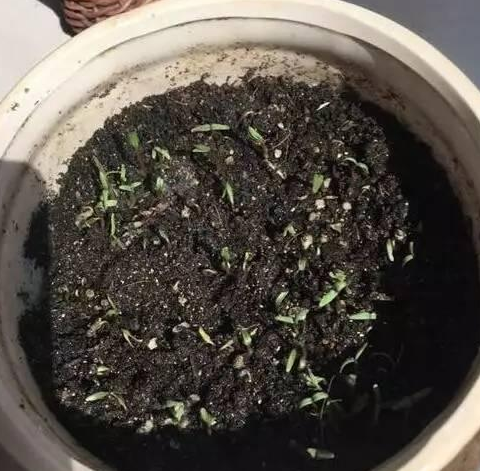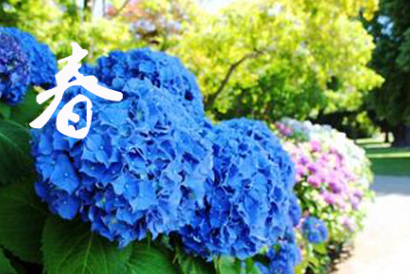How long does it take for the seed planting method to sprout?
Speaking of this baby's breath, this is what many people like. It is not easy to raise this baby's breath well. If it is planted as a seed, it is not easy to germinate. Let's see how the seed planting method of baby's breath is. How long does it take to plant seeds:

Seed planting methods:
To plant Gypsophila paniculata, we need to use soft soil, first soak the soil, set the seeds, and cover them with a thin layer of soil.
It is recommended not to sow too many stars too densely. If watering, as long as the soil is dry, water thoroughly, and reduce the amount of watering when it leaves the seedling stage.
If you want to change the pot for Gypsophila paniculata, then you must transplant it with soil, so it will be easier to survive, and one thing is to be very careful after transplanting watering, do not pour Gypsophila paniculata seedlings.
About 20--35 days after planting, the lower part of the plant begins to sprout lateral buds. We can keep the lower 3--4 pairs of leaves and cut off the main top to allow lateral shoots to grow in order to obtain high yield. Generally, each tree retains 6- 8 branches.
Every half a month to add fertilizer, later to increase phosphorus and potassium fertilizer, if possible, then you can give Gypsophila paniculata to stand, so Gypsophila paniculata will not fall.
The stars are 4:00:
1. Wet the peat soil and sow it.
2, to avoid light, to cover the soil (cover the seeds can be).
3. Cover with plastic wrap and poke some small holes with toothpicks on the film.
4. Put it in a shady place and pay attention to keeping ventilation.
The main points of maintenance after the star grows up:
(1) Do not water the stars too frequently every day. It is necessary to see the white surface of the basin and then water it. In summer, it is generally watered twice a day at high temperature, and once every 8 days in winter. In short, it looks dry and it is necessary to pour proper amount of water.
(2) It is best to place Gypsophila paniculata in sunny places, such as windowsills, balconies, or small courtyard steps, so that Gypsophila paniculata will bloom more flowers.
(3) Sometimes we have to cut off the bad branches and let them grow new leaves, so that the stars will be fuller.
(4) Gypsophila paniculata fertilizer can be applied compound, there are flowers and plants dedicated to nutrient solution or farm manure are OK, fertilizer should be appropriate, every 10 days or so, after fertilization should be appropriate watering.
If you raise it indoors, it is recommended to use nutrient solution, so that it will not smell in the future.
The planting method of Gypsophila paniculata seeds is introduced here, and it is not necessary to have a pot of Gypsophila paniculata in your own home.
The seed planting method of Gypsophila paniculata helps you improve the seed germination rate
Gypsophila paniculata is also known as "bridesmaid flower", with Gypsophila paniculata as a foil, can deal with the weight, density, shade, hidden dew, pitch, height and distance of flower arrangement works. As a foil to the flowering plants, how to plant the seeds of Gypsophila paniculata? Let's take a look.
How do you plant seeds?
Prepare 10 seeds of Gypsophila paniculata, soak them in water at 70℃ for 20 minutes, and take them out for later use. Then take a culture dish with a diameter of 10 cm, spread two layers of filter paper at the bottom of the culture dish, fully wet, take out the soaked Gypsophila paniculata seeds and evenly sow them on the filter paper, and cover them with wet gauze. After seeding, the culture dish is placed in a constant temperature incubator at 20--22 DEG C to wait for germination.
The optimum temperature for seed growth: the best day temperature is 25℃, if it exceeds 30℃, the best night temperature is 10--15℃; the light has a profound effect on the germination of Gypsophila paniculata seeds; the seed needs for soil conditions, generally speaking, the slightly alkaline calcareous soil or gravel loam with good drainage is the best; the seed needs more water, and the water control is often the main factor that determines the success of Gypsophila paniculata cultivation.
Second, the seed planting method of Gypsophila paniculata
1. Cultivation techniques: select well drained soil, remove weeds, dig twice, and apply some farm manure to poor soil. The use of width 2.5--3 meters, length is not limited to box cultivation is good, and broken soil particles, leveling soil surface, in order to manage. Select seedbed plant height of about 15 cm seedlings, 2--3 plants, according to 20 cm X30 cm plant spacing transplanting, 1 mu planting 8000--10000 plants, slightly planted deep--some beneficial root system increase, and choose rainy days or sunny afternoon transplanting good, watering moisture after planting, --generally 3--5 days will reproduce new roots. Later according to weather conditions, combined with watering 1%--2% urea or compound fertilizer solution, conducive to rapid growth. Growth season pests and diseases less, such as aphids found in the seedling stage damage leaves, can be used-general dichlorvos 800 times solution to kill. This variety is suitable for four seasons cultivation, generally in spring, autumn, winter, summer rainy days with soil transplanting, generally will not die seedlings, high survival rate.
2. Propagation method: The variety has strong vitality, fast rooting, long-distance transportation and transplanting resistance, and the survival rate is more than 95%. Propagation-generally using cuttage propagation, in the spring will plant new branches cut off about 10 cm, 3- 4 roots for-cluster cuttage in the sand bed spray moisture, shade, about 15 days to root, and then cultivate more than 20 days to transplant to the soil to cultivate seedlings for sale.
How do you plant seeds, and how do you plant seeds?
The seeds of Gypsophila paniculata should be planted in loose soil as bed, sown in September, covered with fine soil, germinated in about 10 days, and moved to cold bed for winter. Gypsophila paniculata germinates at 15~20 ℃, grows at 10~25 ℃, and sows in early autumn to early spring. For details on the planting method of Gypsophila paniculata seeds, please see the following introduction of Xiaobian.
How do you plant seeds, and how do you plant seeds?
1. Soil selection: select soft soil, wet the soil first, sprinkle seeds after shaping, cover a thin layer of soil, sunshine, temperature is essential, watering principle is dry and thorough irrigation, water should be reduced from seedling stage, with the growth of Gypsophila paniculata, there will be excessive growth phenomenon, need to constantly add soil fixed, not too dense.
2. Cultivation specifications: select seedbed plant height of about 15 cm seedlings, 2-3 plants for-cluster, according to 20 cm X30 cm plant spacing transplanting, 1 mu planting 8000-*** plants, slightly planted deep-some beneficial root system increase, and select rainy days or sunny afternoon transplanting, watering moisture after planting, generally 3-5 days will reproduce new roots.
3. Temperature control: because the whole growth period is more afraid of heat, and the optimal temperature for seeding is 15~20℃, it is often seeded in late September: first disinfect the substrate for seeding, the best way is to put it in the pot to fry, high temperature sterilization, it is recommended to use special seeding peat for seeding.
4. Less change pots: Gypsophila paniculata change pots are easy to die, but if transplanted with soil, it is easier to survive, that is, watering after transplantation should be very careful, can not pour seedlings. According to weather conditions, combined with watering 1%-2% urea or compound fertilizer solution, conducive to rapid growth.
5. Pruning and topping: pruning according to tree shape and growth height, increasing crown diameter, generally 6-8 months, can grow into a plant height of about 30 cm seedlings, can be used for greening projects, plant type, crown diameter larger, the higher the price. About 20-35 days after planting, the lower part of the plant begins to germinate lateral buds. At this time, the lower 3-4 pairs of leaves can be reserved and the main top removed, so that lateral branches can grow in order to obtain high yield. Generally, each tree retains 6-8 branches. Most varieties take 70-90 days from topping to flowering. It's okay not to top it, but the yield will be lower.
6. Pest control: paniculate growing season pests less, such as aphids found in the seedling stage damage leaves, can be used-general dichlorvos 800 times solution to kill. This variety is suitable for four seasons cultivation, generally spring, autumn, winter, summer rainy days with soil transplant generally will not die seedlings, survival rate is high.
Note: wet peat soil first, then sow. To protect from light, to cover the soil (cover the seeds). Cover with plastic wrap and poke small holes with toothpicks. Put it in a dark and shaded place and pay attention to maintaining ventilation.
The above is how to plant Gypsophila paniculata seeds, Gypsophila paniculata seed planting method article, Gypsophila paniculata in cold areas Yichun sowing, in the soil does not freeze areas can be autumn sowing, 7~10 days seedlings unearthed. Irrigation frequently at the early stage of planting, water control properly at the beginning of flower bud formation. The soil should be loose, rich in organic matter, moderate in moisture content, and have a pH of about 7.
- Prev

How to plant the seed?
How to plant the seed?
- Next

Eight Immortals Hydrangea four seasons Management maintenance cut Flowers how to keep fresh
Eight immortal flower branches and leaves dense exhibition, fleshy roots, strong adaptability to the environment, can be planted in the family courtyard, can also be used as a potted beautification balcony. Eight Immortals (Hydrangea) four seasons management and maintenance of eight Immortals like a damp environment, not cold-resistant. Growing in hot heat and hot sun, the leaves are scorched and yellowed.
Related
- Fuxing push coffee new agricultural production and marketing class: lack of small-scale processing plants
- Jujube rice field leisure farm deep ploughing Yilan for five years to create a space for organic food and play
- Nongyu Farm-A trial of organic papaya for brave women with advanced technology
- Four points for attention in the prevention and control of diseases and insect pests of edible fungi
- How to add nutrient solution to Edible Fungi
- Is there any good way to control edible fungus mites?
- Open Inoculation Technology of Edible Fungi
- Is there any clever way to use fertilizer for edible fungus in winter?
- What agents are used to kill the pathogens of edible fungi in the mushroom shed?
- Rapid drying of Edible Fungi

